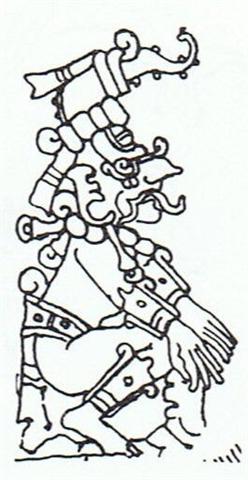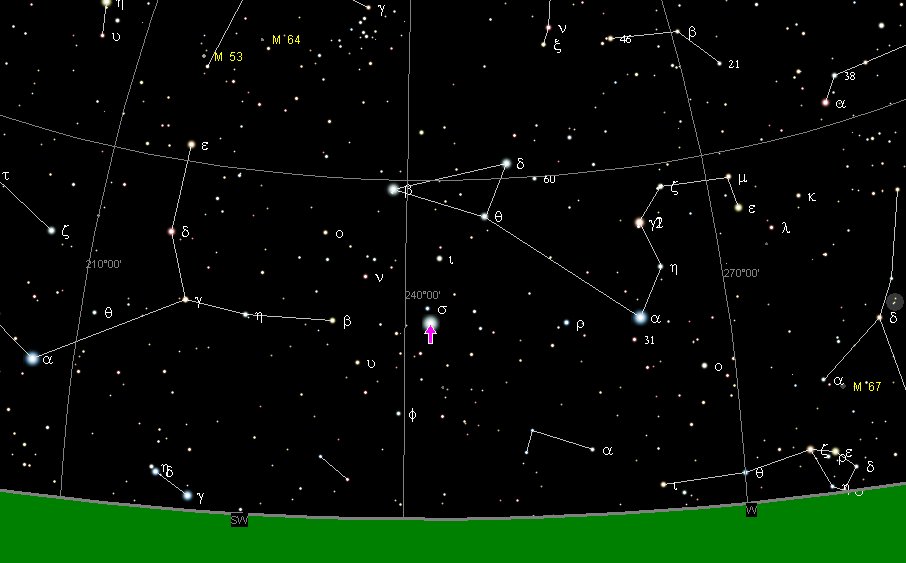197. As if by chance, yesterday evening when preparing dinner in the kitchen, I happened to look out through the window and noticed a light patch among the clouds above the horizon in the east. It could not be the light from the Sun because she had already descended below the horizon in the west and it was dark outside - at my high latitude the Sun should be a female and the Moon male.
So I guessed it was light from the Moon. A little later, when making the evening circuit outside with my dog, this guess was confirmed.
We could see above the horizon in the east a bright and glorious Full Moon. The clouds which had hidden the sky for weeks had now finally disappeared. At the same time I noticed a very bright star (indeed the only star possible to see because of the light pollutions from the surrounding city) - it was a star not very far away to the left and somewhat lower than the Full Moon. I guessed it might be Venus. Coming home I intended to find confirmation via Cartes du Ciel. What was the present date? I guessed it might be October 26 (AD 2023). But I was wrong, because my calendar hanging on the kitchen wall said it was October 28. However, at that time I did not pursue my line of inquiry. In the following evening (October 29 AD 2023) the sky was still clear and to my surprise the order had now changed dramatically. For the Full Moon was now to the left instead of to the right of my assumed Venus. I thought this type of phenomenon must already from the very beginning surely have caught the attention of the ancient star gazers.
Then I remembered the tiny disc of the Full Moon: ... The Heka triplet is where we otherwise would have expected to see a bright single star representing Orion's head (when looking from a location in the northern hemisphere) ... λ and the two stars phi furnish an easy refutation of the popular error as to the apparent magnitude of the moon's disc, Colas writing of this in the Celestial Handbook of 1892: In looking at this triangle nobody would think that the moon could be inserted in it; but as the distance from λ to φ¹ is 27', and the distance from φ¹ to φ² is 33', it is a positive fact; the moon's mean apparent diameter being 31' 7''. This illusion, prevalent in all ages, has attracted the attention of many great men; Ptolemy, Roger Bacon, Kepler, and others having treated of it. The lunar disc, seen by the naked eye of an uninstructed observer, appears, as it is frequently expressed 'about the size of a dinner-plate', but should be seen as only equal to a peppercorn ... It should be convenient to use the apparent disc of the Full Moon as a unit for approximating the apparent distance from the Full Moon to Venus I thought. If the diameter of the Full Moon measured 31' 7", then a full circle should be equivalent to 360° / 31' 7" = 360° / 31.117' = 360° / 0.5186° or approximately 694 Full Moon diameters. This did not help me very much for now, however, because I had not thought about this possibility when looking at the Full Moon to the right and then to the left of my assumed Venus. Next time around I would be able to make approximate measurements. For each perceived Full Moon diameter I can the next time think about how one of them should correspond to ca 360 / 694 = 0.52°. And since 31' 7'' was only the mean apparent diameter of the Full Moon, the ideal measure might have been assigned to be equivalent to precisely 0.52°. ... And two years later, in August 23 AD 2025, the planet Mars ought to be around 780 - 2 * 365 = 50 days after September 15 (258), viz. around November 4 (308). Or to be more precise: 780 - 2 * 364 = 52 days after September 15 (258), viz. in November 6 (which indeed is noted in the retrograde diagram above as a turning point for Mars) ... According to Cartes du Ciel this is the evening sky with Venus in October 28 AD 2023, but where is the Full Moon?
|



